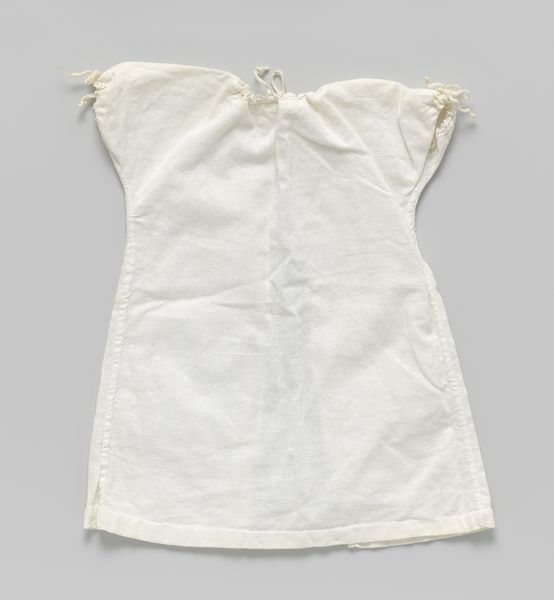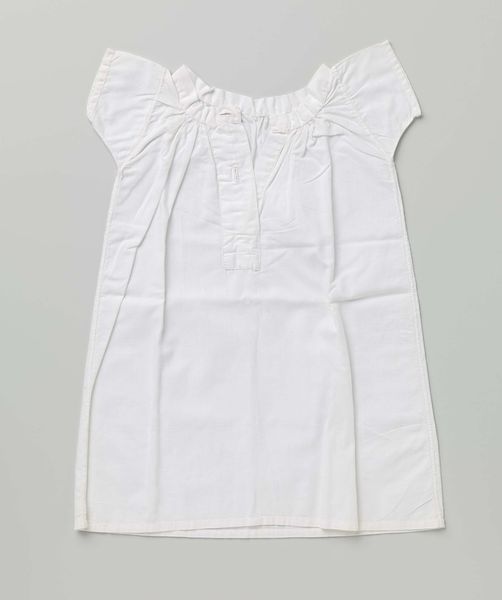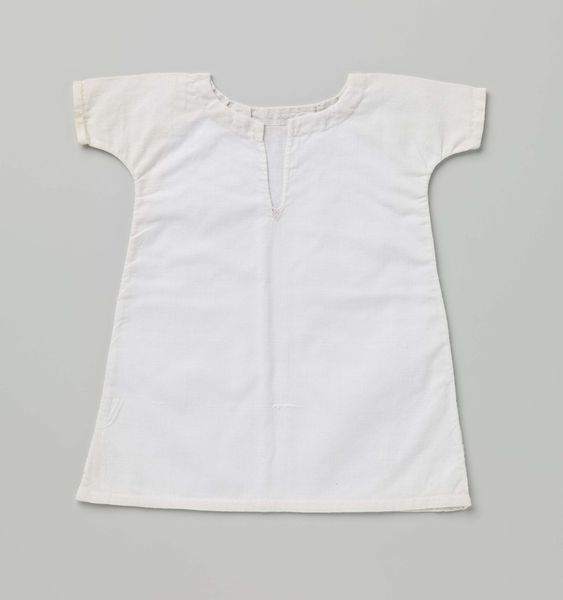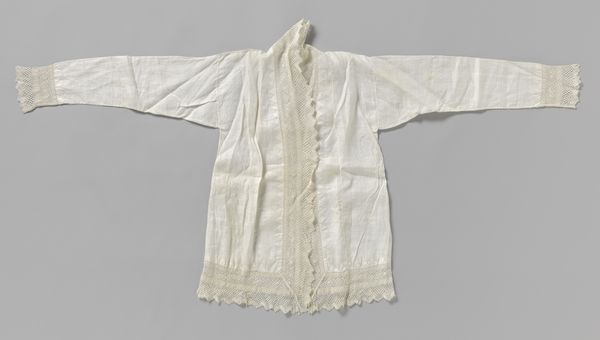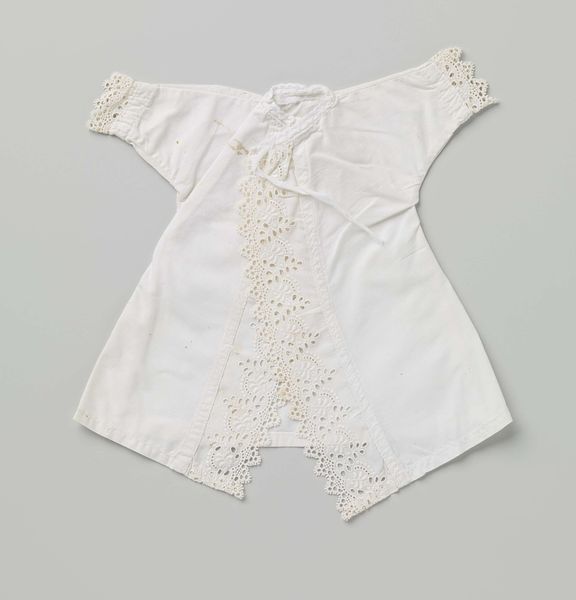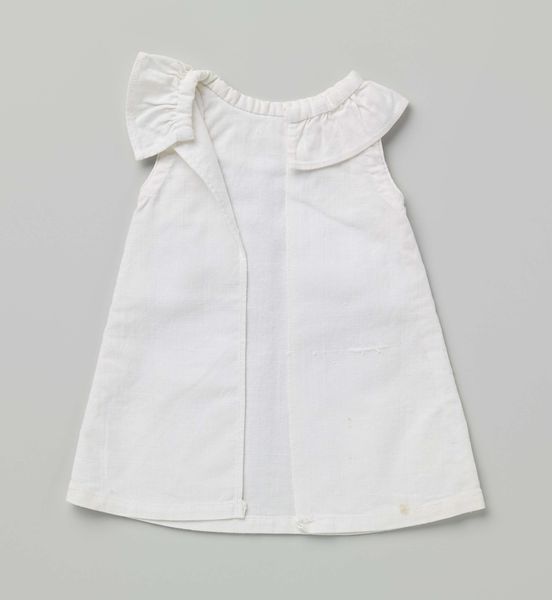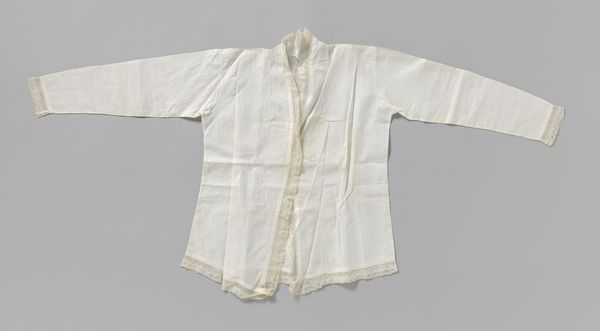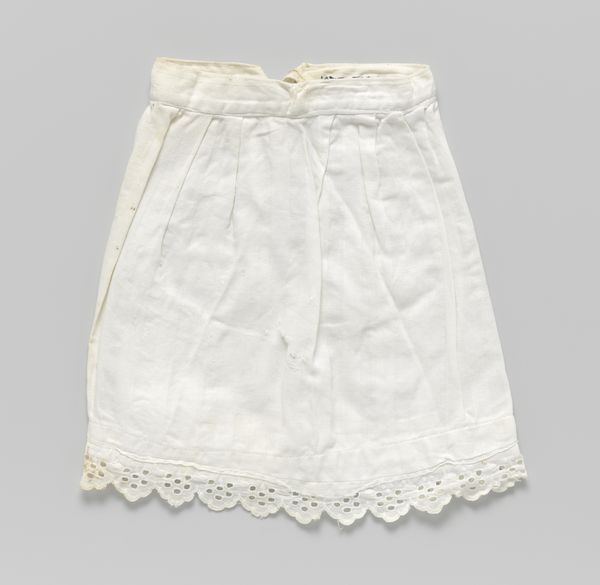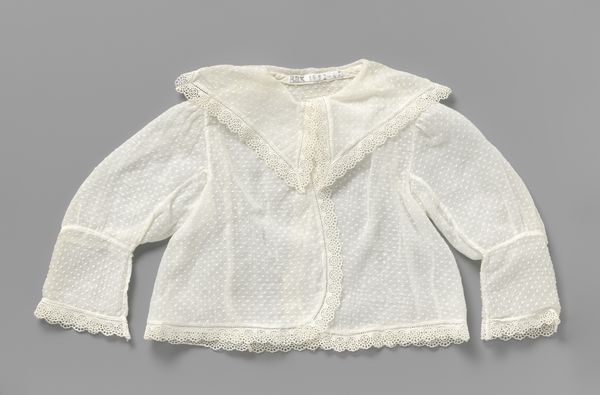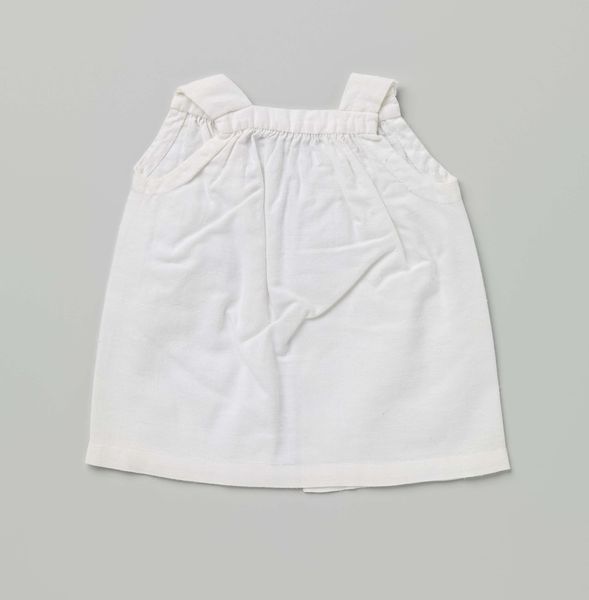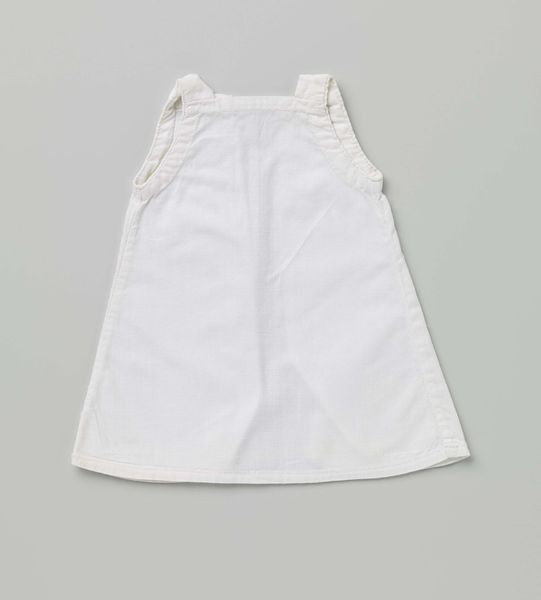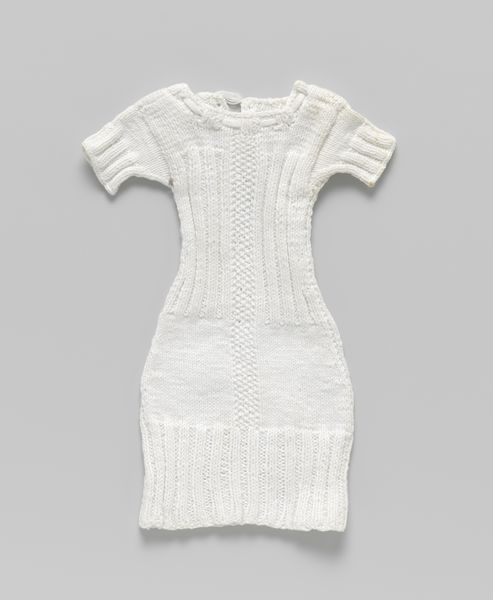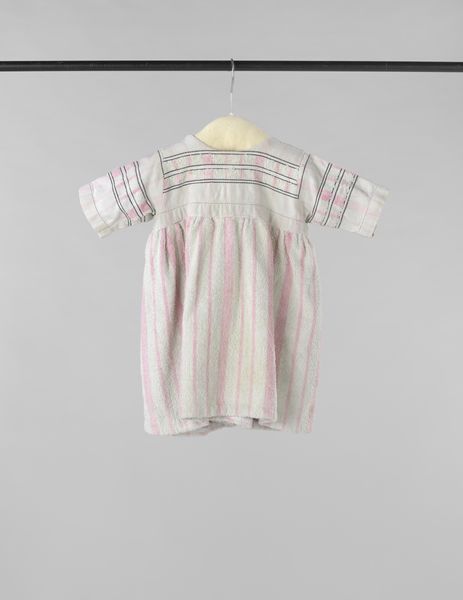
textile, cotton
#
fashion design
#
underwear fashion design
#
fashion mockup
#
textile
#
clothing promotion photography
#
fashion and textile design
#
clothing photography
#
clothing theme
#
sportswear sale photography
#
clothing photo
#
cotton
#
clothing design
Dimensions: length 48 cm, width 41 cm
Copyright: Rijks Museum: Open Domain
Curator: At first glance, I see purity. The simple design, the stark whiteness... it's very striking. Editor: Well, let's unpack that a bit. This object is a "Kindernachtjapon van wit katoen," a child's nightgown made of white cotton, dating back to sometime between 1888 and 1894. Part of the Glas collection. Curator: So, late 19th century. The context is crucial. This wasn't just clothing, it was a statement. White fabric indicated an ability to keep clean. Editor: Precisely, and that speaks volumes about the socio-economic status of the wearer. Think about the labor involved. Not only the cotton cultivation, processing, the weaving but then keeping it this brilliant white in an era where cleaning wasn't a simple chore. Curator: Right! Laundry was a major undertaking. So, to have a child’s garment like this consistently pristine spoke of privilege and leisure, the family’s wealth literally on display in the bedroom. Editor: It also points to changing ideas around childhood. Affluence allowed for greater focus on children and their needs, even for sleepwear. The detail along the collar—lace, it looks like?—that’s handwork, skill and time lavished on a garment made for private hours. Curator: Indeed. Consider the construction—the precise pleating on the bodice, the cuffs, it speaks of skilled labor. Were these commercially made? Or created in the home or made by a local seamstress? Those questions reflect different dynamics within the community. Editor: It would be interesting to investigate. This object isn't just pretty fabric, it’s a testament to the lives, labor, and social values woven into the very fibers of a seemingly simple garment. Curator: It really challenges our contemporary idea of "basics", doesn't it? There is a deep history embodied here. Editor: Absolutely, the gown's material life helps us understand both intimate histories and a wider history of industrial labor, domestic expectations, and material cultures of the period.
Comments
No comments
Be the first to comment and join the conversation on the ultimate creative platform.
